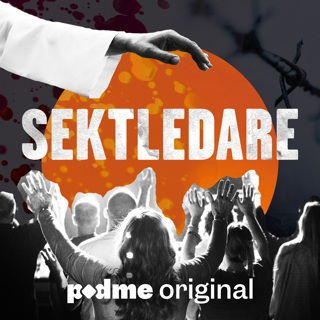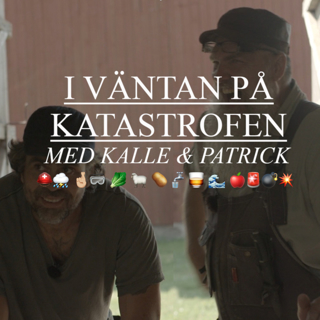
Ep. 433 Kyphoplasty Evolution: Steering Toward Targeted Therapy with Dr. David Prologo
In this episode of the BackTable MSK Podcast, Dr. Dana Dunleavy interviews Dr. David Prologo about his perspective on current advancements in MSK interventions, including steerable spine needles, thermocouples for radiofrequency ablation, and the growing importance of advocacy and longitudinal follow up for patients with chronic pain. Dr. Prologo is an interventional radiologist at Emory University. Dr. Prologo starts by describing the evolution of interventional radiology’s role in MSK interventions. He explains that establishing solid referral networks is crucial to building this service line, and he gives examples of how new interventionalists can highlight their skills to others. Then, he describes a new steerable needle that allows operators to safely enter the vertebral body with a transpedicular approach and subsequently navigate directly to the location of interest. This device is especially useful when lesions are located in tricky areas where the trajectory of a straight needle would have difficulty reaching. He also discusses different devices for bone tumor ablation and his preferred methods for targeting lesions that are located at varying locations in the spine. For lesions below T5, he uses fluoroscopy for better visualization of the axial plane. For lumbar lesions, he emphasizes the importance of correlating and cross-checking vertebral levels with pre-procedural MRI. Dr. Prologo also discusses lessons learned from his extensive experience in spine interventions, especially from prior complications. He explains how thermocouple monitoring can give real time feedback on internal temperature during radiofrequency ablation, the necessity of understanding the ablation zone, and the importance of longitudinal follow up. He cites specific cases of patients struggling with chronic pain and how he advocated for each case. --- CHECK OUT OUR SPONSOR Merit Spine https://www.merit.com/merit-spine/ --- SHOW NOTES 00:00 - Introduction 02:09 - Dr. Prologo’s Career and Leadership Roles 09:52 - Interventional Radiology’s Role in MSK Interventions 13:37 - A Primer for Steerable Vertebral Needles 21:40 - Increasing Standardization and Accessibility of Bone Tumor Ablation 26:37 - Advanced Pain Management in Interventional Radiology’ Book 30:24 - Thermocouples in Radiofrequency Ablation 35:45 - Prior Complications and Importance of Longitudinal Care 44:24 - SIR EDGE 2024 52:31 - Accessing Targets for Basivertebral Nerve Ablation 1:01:17 - The Role of Advocacy in Patient Care --- RESOURCES Osseoflex Steerable Needle: https://www.merit.com/product/osseoflex-sn-steerable-needle/ STAR Tumor Ablation System: https://www.merit.com/product/star-tumor-ablation-system/ Osteocool OsteoCool Radiofrequency Ablation System: https://www.medtronic.com/us-en/healthcare-professionals/products/spinal-orthopaedic/tumor-management/osteocool-ablation-system-rf.html OptaBlate Bone Tumor Ablation System: https://providers.strykerivs.com/products/optablate ‘Advanced Pain Management in Interventional Radiology’ by J. David Prologo and Charles E. Ray Jr: https://shop.thieme.com/Advanced-Pain-Management-in-Interventional-Radiology/9781684201402 Ablation zones and weight-bearing bones: points of caution for the palliative interventionalist: https://pubmed.ncbi.nlm.nih.gov/24745905/ SIR EDGE 2024: https://www.sirweb.org/learning-center/meetings/sir-edge/ ‘The Catching Point Transformation’ by J. David Prologo: https://www.catchingpoint.com/
9 Apr 20241h 11min

Ep. 432 AI in Medicine: Navigating the New Frontier with Confidence with Dr. Matthew Lungren
In this episode, Dr. Matthew Lungren discusses the transformative potential of Artificial Intelligence (AI) in healthcare, sharing insights into large language models, deep learning, and machine learning in improving patient care, enhancing clinical workflows, and optimizing medical research. Dr. Lungren is a pediatric diagnostic and interventional radiologist, and the Chief Data Science Officer at Microsoft Health and Life Sciences. He advocates for a future where AI acts as a tool for healthcare professionals, allowing them to devote more time to patient care rather than administrative tasks. Additionally, the discussion explores concerns such as AI’s impact on employment and interactions with insurance companies, while presenting resources for healthcare professionals to engage with and learn about AI technologies actively. --- CHECK OUT OUR SPONSOR Reflow Medical https://www.reflowmedical.com/ --- SHOW NOTES 00:00 - Introduction 03:00 - The Journey to AI Expertise: Dr. Lungren’s Story 05:48 - Decoding AI: From Basics to Large Language Models 13:07 - AI’s Impact on Healthcare and Beyond 15:57 - Exploring AI’s Potential in Content Creation and Clinical Efficiency 20:22 - The Future of AI in Healthcare: Opportunities and Challenges 25:27 - Leveraging AI for Diagnostic Radiology and Beyond 27:42 - The Transformative Potential of Generative AI in Healthcare 33:40 - Addressing Concerns: AI’s Role in Insurance and Patient Advocacy 36:41 - Empowering Healthcare Professionals with AI: Practical Applications and Future Outlook --- RESOURCES Fundamentals of Machine Learning for Healthcare - Stanford University Coursera Course: https://www.coursera.org/learn/fundamental-machine-learning-healthcare Dr. Matt Lungren’s LinkedIn Learning Course on Generative AI: https://www.linkedin.com/learning/an-introduction-to-how-generative-ai-will-transform-healthcare/introduction-to-generative-ai-in-healthcare DeepLearning.AI Website (Professor Andrew Ng): https://www.deeplearning.ai/ Fast.AI Website (Professor Jeremy Howard): https://www.fast.ai/ Professor Jeremy Howard YouTube: https://www.youtube.com/@howardjeremyp/featured Healthcare Information and Management Systems Society (HIMMS) Meeting: https://www.himssconference.com/en/homepage.html
5 Apr 202446min

Ep. 430 Navigating Insurance Contracts in the OBL Setting with Dr. Deepak Sudheendra and Laurie Bouzarelos
In this episode of the BackTable Podcast, host Dr. Ally Baheti interviews Dr. Deepak Sudheendra and Laurie Bouzarelos about the complexities of navigating insurance for procedures performed in vascular and interventional radiology outpatient-based labs (OBLs). Dr. Sudheendra is an interventional radiologist at 360 Vascular Solutions in Dublin, Ohio and Laurie Bouzarelos is the founder and owner of Provider Solutions, a small business which focuses on coaching private practice and business-owning physicians on payor contracting. The conversation illuminates common challenges faced by physicians when negotiating insurance contracts, and it emphasizes the lack of awareness among insurance companies about the roles of IRs and the significance of OBLs. Laurie Bouzarelos shares her expertise on insurance contracting, highlighting the importance of education, strategy, and patient-focused care in achieving favorable contract terms. The episode delves into tactics for contract negotiation, leveraging data for better rates, and the critical role of in-house billing for financial transparency and control. Dr. Sudheendra shares his personal journey and the tenacity required to educate insurance providers about IR and OBLs. He underscores the broader need for healthcare professionals to advocate vigorously for their both patient care standards and their financial interests. The episode also includes practical insights for setting up a fee schedule, understanding market dynamics, and the potential pitfalls in standard contracts. --- CHECK OUT OUR SPONSORS Varian, a Siemens Healthineers company https://www.siemens-healthineers.com/ Reflow Medical https://www.reflowmedical.com/ --- SHOW NOTES 00:00 - Introduction 03:14 - Journey of Insurance Contracting: From Confusion to Clarity 10:08 - Art of Negotiation: Laurie’s Unique Coaching Model 19:53 - Leveraging Data for Effective Insurance Negotiations 25:17 - Power of Negotiation: Changing the Game in Insurance Contracting 28:09 - Exploring the Challenges of Physician Negotiations with Insurance Companies 31:54 - Power of Personal Advocacy and Site Visits in Negotiations 36:45 - Navigating Contract Renegotiations and Understanding Fee Schedules 40:56 - Importance of In-House Billing and Vigilant Fee Management 52:16 - Final Advice: The Importance of Negotiation and Understanding Your Business --- RESOURCES Provider Solutions (Laurie Bouzarelos’ company): https://www.providersolutionsconsulting.com/about
29 Mars 202457min

Ep. 429 Tackling Upper GI Bleeds: Techniques and Tools with Dr. Osman Ahmed
In this episode of the BackTable Podcast, host Dr. Aaron Fritts interviews Dr. Osman Ahmed about treatment algorithms and new technologies for upper gastrointestinal (GI) bleed embolization. Dr. Ahmed is an interventional radiologist at the University of Chicago. The doctors dive into various embolization techniques, microcatheters, and embolic materials that are ideal for managing upper GI bleeds. Dr. Ahmed highlights the importance of understanding the etiology of bleeding, differences between arterial vs. venous bleeding, and first-line therapies such as endoscopy. Dr. Ahmed also discusses the utilization of new embolic materials like Obsidio Embolic, which is designed specifically for peripheral use, and its advantages in achieving rapid and complete vessel occlusion. Additionally, the doctors cover pre-procedural imaging, procedural techniques, and operator preferences for microcatheters and embolic devices. They emphasize the procedural nuances, operator comfort, and evolving technologies in the management of GI bleeds. --- CHECK OUT OUR SPONSOR Boston Scientific Obsidio Embolics https://www.bostonscientific.com/obsidio --- SHOW NOTES 00:00 - Introduction 03:29 - Discussion on Upper GI Bleeds 06:35 - Pre-Procedure Imaging for Upper GI Bleeds 11:16 - Procedure Walkthrough for Upper GI Embolization 19:51 - Understanding Mesenteric Anatomy 22:50 - Embolization Devices: Coils and More 25:31 - Exploring Obsidio: A New Embolic 32:55 - Post-Procedure Care 34:17 - Case Discussions and Final Thoughts --- RESOURCES Navigating Early Cases with the Obsidio™ Conformable Embolic - GEST 2023 Webinar with Dr. Ahmed: https://thegestgroup.com/webinar-featuring-obsidio/ BackTable VI Episode #179 - Happiness is a Warm Coil: Treating GI Bleeds with Dr. Donald Garbett: https://www.backtable.com/shows/vi/podcasts/179/happiness-is-a-warm-coil-treating-gi-bleeds BackTable VI Episode #216 - Stick It: Glue Embo with Dr. Ziv Haskal: https://www.backtable.com/shows/vi/podcasts/216/stick-it-glue-embo BackTable VI Episode #321 - New Innovations in Lower GI Bleed Embolization with Dr. Kevin Henseler: https://www.backtable.com/shows/vi/podcasts/321/new-innovations-in-lower-gi-bleed-embolization Obsidio - Conformable Embolic: https://www.bostonscientific.com/obsidio
26 Mars 202437min

Ep. 428 Radial Access Evolution: Clinical Perspectives and Insights from the RAVI Registry with Dr. Marcelo Guimaraes
In this episode of the BackTable Podcast, host Dr. Michael Barraza interviews guest Dr. Marcelo Guimaraes about the advantages and implementation of radial access in interventional radiology. Dr. Guimaraes is a vascular and interventional radiologist from the Medical University of South Carolina (MUSC). Dr. Guimaraes shares insights on the adoption of radial access over femoral access, emphasizing its simplicity, safety, and the clear benefits recognized by younger interventionalists. He elaborates on the importance of education, partnership with the industry, and following a standard protocol to build a successful radial access program. The doctors also cover specific topics like the RAVI Registry outcomes, patient preferences for radial access based on a study, the cost-benefit analysis, and handling various challenges such as artery spasms and loops. Dr. Guimaraes advocates for radial access as the default method for embolization therapies, highlighting its efficacy across a range of procedures and patient conditions. --- CHECK OUT OUR SPONSOR Medtronic Concerto https://mobile.twitter.com/mdtvascular --- SHOW NOTES 00:00 - Introduction 02:56 - Insights into MUSC’s Interventional Radiology Program 04:44 - Emergence of Radial Access in Interventional Procedures 07:04 - Challenges and Solutions in Setting Up a Radial Access Program 10:14 - Essential Equipment for Radial Access 22:20 - Addressing Spasm Challenges in Radial Access 30:11 - Patient Preference: Radial vs Femoral Access 32:46 - Safety and Efficacy of Radial Access: The Data 41:11 - Post-procedure Hemostasis Protocol 43:51 - Optimal Radial Artery Access Point and Best Practices --- RESOURCES How To Do The Barbeau Test - BackTable Demo: https://www.backtable.com/shows/vi/demos/how-to-do-the-barbeau-test Comparison of transradial coronary procedures via right radial versus left radial artery approach: A meta-analysis: https://pubmed.ncbi.nlm.nih.gov/27037544/ Transradial Versus Transfemoral Arterial Access in Liver Cancer Embolization: Randomized Trial to Assess Patient Satisfaction (Dr. Guimaraes paper): https://pubmed.ncbi.nlm.nih.gov/29150395/ An Update on Radial Artery Access and Best Practices for Transradial Coronary Angiography and Intervention in Acute Coronary Syndrome: A Scientific Statement From the American Heart Association: https://www.ahajournals.org/doi/full/10.1161/HCV.0000000000000035 The RAVI registry: prospective, multicenter study of radial access in embolization procedures – 30 days follow up: https://www.ncbi.nlm.nih.gov/pmc/articles/PMC10828405/
22 Mars 202451min

Ep. 427 TREAT Symposium: Advancing Clinical Education with Live Cases with Dr. Aaron Fischman
In this episode of BackTable Podcast, host Dr. Sabeen Dhand interviews guest Dr. Aaron Fischman about the TREAT Symposium and its evolution into TREAT Live, a platform for broadcasting live endovascular cases. Dr. Fischman is a vascular and interventional radiologist at Mount Sinai in New York. Dr. Fischman details the journey from TREAT’s inception as a conference focused on radial interventions to its current form, which includes a monthly live case streaming setup aimed at providing continuous medical education. The discussion covers the strategic shift from annual conferences to monthly live streams due to the pandemic, the logistical challenges and solutions for setting up live broadcasts, and the educational benefits of showcasing live cases, including the potential for offering CME credits. Dr. Fischman also shares insights into the selection of cases and operators, emphasizing the diversity of cases and the future direction of the program. The doctors also underscore the importance of innovation in medical education and the potential of live case broadcasts to enhance learning and improve patient care. --- CHECK OUT OUR SPONSOR Varian, a Siemens Healthineers company https://www.siemens-healthineers.com/ --- SHOW NOTES 00:00 - Introduction 01:53 - Meet Dr. Aaron Fischman: A Pioneer in Transradial Interventions 02:19 - Evolution of TREAT Symposium: From Concept to Live Cases 06:06 - TREAT Live’s Monthly Case Broadcasts 10:28 - Future of Medical Education: Live Cases and CME Credits 16:32 - Impact and Expansion of TREAT Live --- RESOURCES TREAT Live: https://treatsymposium.com/ BackTable VI Episode #30 - Transradial Access: Basic to Advanced with Dr. Aaron Fischman: https://www.backtable.com/shows/vi/podcasts/30/transradial-access-basic-to-advanced
20 Mars 202420min

Ep. 426 Managing Pelvic Venous Disease: From Diagnosis to Treatment with Dr. Neil Khilnani
In this episode of the BackTable Podcast, host Dr. Aaron Fritts interviews Dr. Neil Khilnani about the management of pelvic venous disorders, focusing on embolization practices for treating conditions such as chronic pelvic pain and pelvic venous syndrome. Dr. Khilnani is an interventional radiologist at Weill Cornell Medicine in New York Presbyterian Hospital. --- CHECK OUT OUR SPONSOR Cook Medical Embolization https://www.cookmedical.com/embobacktable --- SYNPOSIS Dr. Khilnani discusses the significance of identifying and treating venous disorders in patients with chronic pelvic pain. He emphasizes the need for a comprehensive approach that includes detailed patient history, physical exams, and imaging techniques such as ultrasound, CT, and MRI for accurate diagnosis. The doctors also cover the evolution of embolization techniques, including the use of balloon occlusion and sclerosants and they underscore the importance of addressing underlying venous insufficiencies for effective pain management. Additionally, Dr. Khilnani highlights the interconnectedness of various pelvic symptoms and the potential for embolization to alleviate not just pelvic pain, but also related conditions such as painful bladder syndrome and orthostatic hypotension. The doctors acknowledge the ongoing research and the need for collaboration across specialties to improve patient outcomes in pelvic venous disorder. --- TIMESTAMPS 00:00 - Introduction 04:44 - Pelvic Venous Disease 09:20 - Prevalence of Pelvic Venous Disease 13:54 - Challenges in Communication with Referring Doctors 18:32 - Workup and Diagnosis of Pelvic Venous Disorders 30:08 - Treatment Options and Patient Education 36:19 - Role of Social Media in Patient Support Networks 37:04 - Procedure: From Planning to Execution to Post-Intervention 54:07 - Navigating Difficult Anatomy and Potential Complications 01:02:34 - Future of Pelvic Venous Disorders Treatment: Research and Trials --- RESOURCES BackTable VI Episode 389 - Pelvic PT: An Introduction for Interventionalists with Ingrid Harm-Ernandes, PT: https://www.backtable.com/shows/vi/podcasts/389/pelvic-pt-an-introduction-for-interventionalists BackTable VI Episode 337 - Management of Vulvar Varices with Dr. Brooke Spencer: https://www.backtable.com/shows/vi/podcasts/337/management-of-vulvar-varices BackTable VI Episode 101 - Pelvic Congestion Syndrome Part 1: Diagnosis and Planning with Dr. Mark Meissner and Dr. Michael Cumming: https://www.backtable.com/shows/vi/podcasts/101/pelvic-congestion-syndrome-part-1-diagnosis-planning BackTable VI Episode 101 - Pelvic Congestion Syndrome Part 2: Technique and Follow-Up with Dr. Mark Meissner and Dr. Michael Cumming: https://www.backtable.com/shows/vi/podcasts/102/pelvic-congestion-syndrome-part-2-technique-follow-up A standardized ultrasound approach to pelvic congestion syndrome (Labropoulos et al): https://pubmed.ncbi.nlm.nih.gov/27799418/ Comparison of Fibered versus Nonfibered Coils for Venous Embolization in an Ovine Model (White et al): https://pubmed.ncbi.nlm.nih.gov/37105664/ Pelvic Venous Disorders in Women due to Pelvic Varices: Treatment by Embolization: Experience in 520 Patients (De Gregorio et al): https://www.jvir.org/article/S1051-0443(20)30534-0/abstract Improvement in chronic pelvic pain, orthostatic intolerance and interstitial cystitis symptoms after treatment of pelvic vein insufficiency (Smith et al): https://journals.sagepub.com/doi/abs/10.1177/02683555231219737 The Symptoms-Varices-Pathophysiology classification of pelvic venous disorders: A report of the American Vein & Lymphatic Society International Working Group on Pelvic Venous Disorders: https://www.jvsvenous.org/article/S2213-333X(21)00071-8/fulltext Research Priorities in Pelvic Venous Disorders in Women: Recommendations from a Multidisciplinary Research Consensus Panel: https://pubmed.ncbi.nlm.nih.gov/30857986/ Find this episode on BackTable.com for the full list of resources.
19 Mars 20241h 9min





















